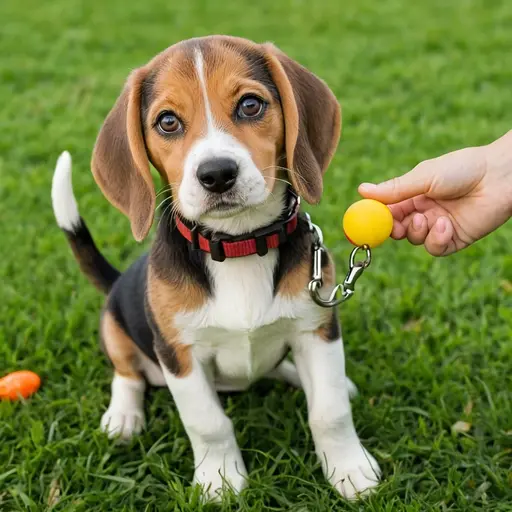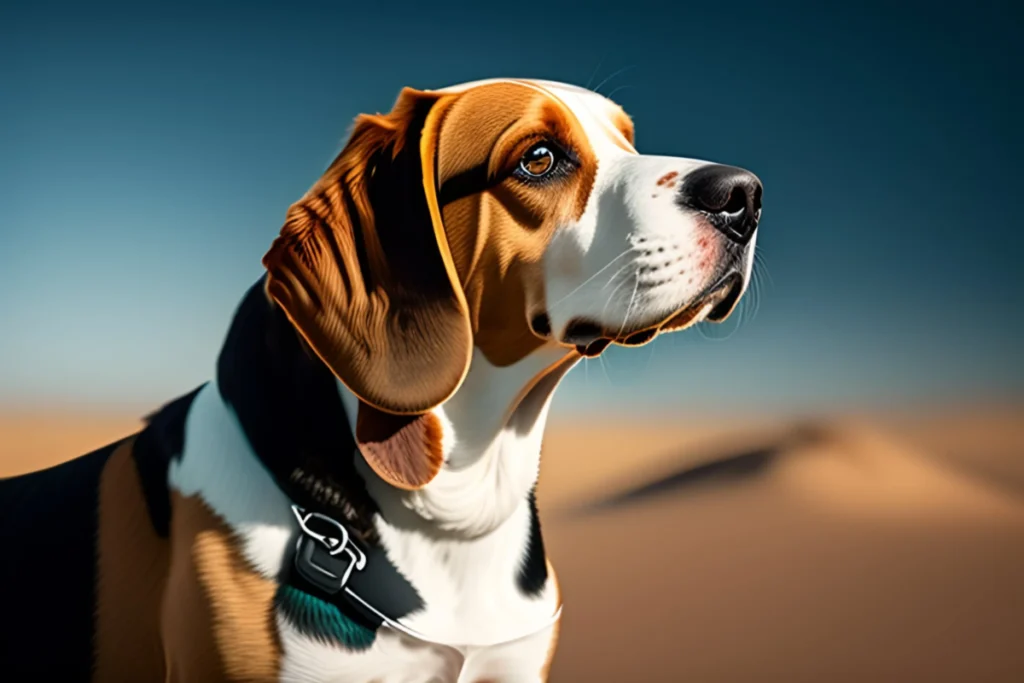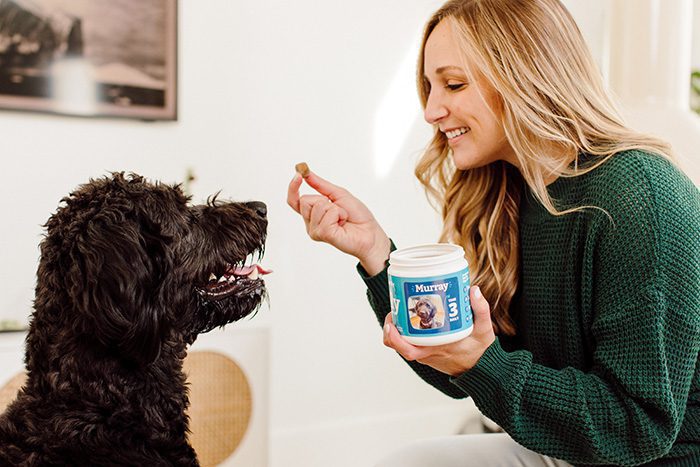Raising Beagle puppies to be happy and healthy involves understanding their needs. These energetic, curious companions thrive with proper care, and getting it right early can make a big difference in their development. Let’s break down the essentials to help you provide the best for your furry friends.
Why Beagle Puppies Are Special
Beagles aren’t just another breed but a bundle of contradictions wrapped in a floppy-eared package. Their friendliness is legendary, earning them a reputation as perpetual optimists who thrive on human connection. Yet, this sociability means they can develop separation anxiety if left alone for too long.
Then there’s their intelligence, which fuels their ability to learn commands quickly—but also their knack for outsmarting closed doors or “innocently” stealing socks.
Pair this with their legendary sense of smell, and you have a puppy who views the world as a scavenger hunt, often prioritizing scent trails over obedience. These traits make Beagles endlessly entertaining, but they also demand patience and strategy from owners.
What This Guide Covers
Raising a Beagle puppy isn’t just about surviving the chewing phase or mastering house training. It’s about nurturing their potential while navigating their quirks. This guide dives into:
- Understanding the breed’s instincts: How their scent-driven nature shapes behavior and interactions.
- Socializing your puppy: Building confidence and preventing overattachment.
- Training techniques: Leveraging their intelligence without letting it turn into stubbornness.
- Health and care essentials: Nutrition, exercise, and safety tailored to their energetic, curious nature.
Whether you’re a first-time owner or a seasoned Beagle enthusiast, this resource equips you to transform puppyhood challenges into opportunities for bonding—and maybe even a few laughs along the way. Let’s unlock the secrets to raising a happy, well-adjusted Beagle who’s as joyful to live with as they are unforgettable.

Understanding Beagle Puppies
History and Origins of Beagles
Beagles trace their roots to medieval England, where they were bred as scent hounds for hunting small game like rabbits and hares. Their name likely derives from the Old French beag, meaning “small,” reflecting their compact size compared to larger hound breeds.
Bred to work in packs, they relied on their keen sense of smell and endurance to track prey over long distances, a role that required both independence and cooperation.
This history isn’t just trivia—it explains why modern Beagle puppies seem hardwired to sniff, wander, and vocalize. Their ancestors’ instincts are alive and well, often turning a simple walk into an impromptu scent expedition.
Breed Characteristics
Beagles are a study in contrasts: equal parts affectionate companion and determined explorer. Key traits include:
- Boundless curiosity: Their world revolves around discovery, whether investigating a leaf pile or deconstructing your shoe.
- High energy levels: A legacy of days spent trotting through fields means they thrive on activity—not just physical exercise, but mental stimulation too.
- Scent-driven focus: With up to 220 million scent receptors (humans have just 5 million), their noses often override commands, especially if something intriguing is afoot.
These qualities make Beagles adaptable and engaging but also demand owners who can channel their intensity constructively.
How These Traits Influence Behavior
Understanding a Beagle’s DNA is key to decoding its behavior. Their pack mentality from hunting days translates to a love for companionship—puppies may follow you from room to room, wary of being left alone.
The same drive that once helped them track games now manifests as relentless exploration. A Beagle pup might vanish into the backyard for hours, nose to the ground, oblivious to calls—not out of defiance, but dedication.
This single-mindedness can also lead to stubbornness. When a scent captivates them, even the most well-trained Beagle might “selectively hear” your commands.
Similarly, their intelligence—honed by centuries of problem-solving in the field—means they learn quickly but also invent creative mischief (like unlocking gates or raiding trash cans).
In short, Beagle puppies aren’t being “naughty”; they’re being Beagles. Their behavior is a direct line to their heritage, requiring patience, redirection, and a sense of humor.
By embracing their instincts while setting clear boundaries, you’ll turn their quirks into the very traits that make life with a Beagle unforgettable.
Socializing Your Beagle Puppy
Why Socialization Is Crucial for Beagles
Beagles are born with a foot in two worlds: they crave companionship yet possess an independent streak that harks back to their hunting roots. Without proper socialization, this duality can lead to confusion.
A puppy who isn’t exposed to new people, pets, or environments may become overly clingy with their owner or excessively aloof. Early socialization acts as a bridge, teaching them to navigate the world with confidence while balancing their innate curiosity.
It also helps mitigate their tendency to fixate on scents or sounds, ensuring they remain engaged with their human pack.
When to Start Socializing
The golden window for socialization opens early—as young as 8 weeks old. This is when puppies are most receptive to new experiences, though it’s essential to balance exposure with safety.
Prioritize vet-approved outings and interactions in low-risk settings, like quiet parks or visits with vaccinated gentle dogs. Avoid crowded areas until vaccinations are complete, but don’t delay socialization entirely: even at home, you can introduce them to novel objects, textures, and sounds (think vacuum cleaners, doorbells, or rain).
Tips and Strategies for Effective Socialization
- Broaden their horizons: Introduce your Beagle puppy to a variety of people (different ages, appearances, and voices), calm animals, and environments. A trip to a quiet café patio or a friend’s backyard can be an adventure.
- Turn training into play: Use treats and praise to reward calm, curious behavior during new experiences. For example, scatter kibble in the grass to encourage sniffing while associating outdoor spaces with positive rewards.
- Gradual exposure is key: Start with subtle challenges, like walking on gravel or hearing a whistle, and slowly increase complexity. This prevents sensory overload, especially for a breed wired to hyper-focus on stimuli.
- Leverage their pack mentality: Enroll in puppy classes to foster interactions with other dogs, but supervise play to ensure it stays gentle. Beagles often thrive in groups but may need reminders to dial back their enthusiasm.
Common Socialization Mistakes to Avoid
- Overwhelming the puppy: Flooding them with too many new experiences at once can trigger anxiety. Let them set the pace—watch for signs of stress like tucked tails or avoidance.
- Delaying socialization: Waiting until adulthood risks ingraining fear or reactivity. Even brief daily exposures during puppyhood build resilience.
- Ignoring their scent-driven focus: If your Beagle zones in on a smell during a walk, don’t yank the leash. Redirect gently with a command or treat, acknowledging their instincts while guiding behavior.
- Forcing interactions: Let shy puppies observe from a distance rather than push them into uncomfortable situations. Confidence grows with patience, not pressure.
By blending structure with flexibility, socialization becomes a confidence booster for your Beagle. It transforms their natural curiosity into adaptability, ensuring they grow into well-rounded adults who can handle life’s surprises—whether that’s a chaotic family gathering or a squirrel darting across the yard.
Remember, every new experience is a chance to nurture their inner explorer while reinforcing the bond you share.

Training Your Beagle Puppy
Basic Obedience Training
Beagles are whip-smart, but their independent streak means training requires creativity. Start with foundational commands like “sit,” “stay,” and “come,” but don’t expect perfection overnight.
Their noses often hijack their focus, so keep sessions short (5–10 minutes) and lively. Use their name consistently to grab attention, pairing verbal cues with hand signals. For example, hold a treat above their nose to lure them into a “sit,” then reward them instantly.
Pro Tip: End sessions on a positive note, even if progress is slow. A frustrated Beagle may shut down, but a happy one will try harder next time.
House Training a Beagle Puppy
House training tests even patient owners, thanks to Beagles’ selective hearing when a scent trail beckons. Stick to a routine: take them outside first thing in the morning, after meals, and before bed. Praise enthusiastically when they eliminate outdoors, but avoid scolding accidents—this breeds confusion, not compliance.
Step-by-Step Guide:
- Designate a “potty zone”: Use the same indoor and outdoor spot each time to reinforce consistency.
- Supervise or confine: When indoors, keep them in sight or use a puppy-proofed area.
- Crate training: If used, ensure the crate is a safe, cozy den—not a punishment. Most Beagles avoid soiling their sleeping space.
- Troubleshoot stubbornness: If they refuse to go outside, try a leash walk to reset focus.
Addressing Common Behavior Issues
Beagles aren’t “problem” dogs—they’re just being Beagles. Excessive barking? It’s rooted in their pack-hunting past, where vocalizations coordinated the chase. Redirect this by teaching a “quiet” command and rewarding silence.
Chewing? Provide indestructible toys and schedule frequent playtimes to burn energy. Digging? Designate a sandbox or patch of yard where they’re allowed to excavate.
Key Insight: These behaviors aren’t defiance—they’re instincts. Channel them constructively, and you’ll both win.
Tips for Training a Beagle Specifically
- Engage their nose: Turn training into a scavenger hunt. Hide treats around the house or yard, encouraging them to “find it” on command.
- Food as motivation: Use high-value treats (like diced chicken) to reward focus. Beagles live to eat, so leverage this!
- Incorporate movement: Practice commands during walks or play. A tired Beagle is a more cooperative Beagle.
- Stay patient with stubbornness: If they ignore a command, pause and try again later. Repetition without frustration is key.
Remember, Beagles thrive on partnership. Training isn’t about dominance—it’s about building trust and making learning feel like teamwork. Celebrate small wins, and soon you’ll have a polite companion who still knows how to make you laugh.
Health and Care for Beagle Puppies
Nutrition for Growing Beagle Puppies
A Beagle’s boundless energy starts with the right fuel. Puppies require a high-quality diet rich in protein to support muscle development and healthy fats for brain growth.
Look for formulas designed for active breeds, avoiding fillers like corn or soy that can lead to weight gain. Portion control is critical: their “chowhound” reputation means they’ll devour anything in sight, but obesity can strain joints and shorten their lifespan.
Feeding Tips:
- Split meals into 3–4 smaller portions daily to aid digestion and prevent overeating.
- Transition to adult food gradually at around 12–15 months.
- Avoid free-feeding; instead, use meal times to reinforce routine and prevent food aggression.
Exercise Needs and Ideas
Beagles are built for endurance, but puppies need careful exercise to protect developing joints. Aim for 30–60 minutes of activity daily, blending physical play with mental workouts. Think beyond fetch:
- Scent trails: Drag a treat along the ground for them to follow—it’s a workout for their nose and body.
- Puppy playdates: Social runs with other dogs burn energy and refine social skills.
- Interactive toys: Puzzle feeders or snuffle mats tap into their foraging instincts.
Avoid long runs or jumps until they’re at least a year old; their enthusiasm often outpaces their physical maturity.
Grooming Essentials
Beagles’ short coats are low-maintenance, but their droopy ears and active lifestyle require attention:
- Brush weekly with a rubber curry brush to minimize shedding and distribute natural oils.
- Ear cleaning: Use a vet-approved solution and cotton ball weekly to prevent infections—floppy ears trap moisture and debris.
- Nail trimming: Clip every 2–3 weeks to avoid overgrowth. If they resist, start with short sessions and reward calm behavior.
- Bath time: Limit to once a month unless they roll in something unsavory—over-bathing dries their skin.
Common Health Issues in Beagle Puppies
While generally robust, Beagles are prone to certain conditions:
- Hip dysplasia: Encourage moderate exercise and maintain a lean weight to reduce joint stress.
- Epilepsy: Watch for unexplained seizures; early veterinary intervention is crucial.
- Ear infections: Regular cleaning and drying after baths or swims can prevent this.
- Hypothyroidism: Monitor for lethargy or weight gain despite normal appetite.
Prevention Tips:
- Schedule annual vet checkups and keep vaccinations current.
- Monitor growth patterns—sudden weight gain or limping warrants a vet visit.
- Provide joint-supportive supplements (like glucosamine) if advised by your vet.
By prioritizing nutrition, exercise, and preventive care, you’ll nurture a Beagle puppy who’s not just surviving but thriving. Their health journey mirrors their personality: a mix of vigilance and joy, ensuring they grow into the spirited, affectionate companions they’re meant to be.

Finding and Choosing a Beagle Puppy
Selecting a Reputable Breeder or Rescue
Bringing home a Beagle puppy is an exciting milestone, but the choices you make beforehand shape a lifetime of companionship. Start by deciding whether to work with a breeder or adopt through a rescue. Ethical breeders prioritize health and temperament, often welcoming you to meet the puppy’s parents and tour their facilities. Red flags include breeders who:
- Refuse to show health certifications (like OFA testing for hips).
- Keep puppies isolated from household activity or other dogs.
- Pressure you to pay in cash or avoid contracts.
For those considering adoption, Beagle Rescue offers a second chance to dogs of all ages. While puppies may be less common, many rescues have young dogs who still benefit from early training and socialization. Always ask about the dog’s history, health, and behavioral assessments.
What to Look for in a Healthy Beagle Puppy
A healthy Beagle pup is a vibrant, curious explorer. Key signs to observe:
- Bright, clear eyes with no discharge and ears free of odor or debris.
- Shiny coat with no bald patches or excessive scratching.
- Playful energy balanced with moments of calm curiosity.
- Solid appetite and appropriate weight for their age.
When meeting a litter, watch how the puppies interact. A well-socialized Beagle should approach you confidently, tail wagging, but not be overly frantic. Avoid puppies that seem lethargic, overly timid or show signs of respiratory issues (like sneezing or coughing).
Questions to Ask Before Bringing a Puppy Home
Transparency is non-negotiable, whether you’re working with a breeder or a rescue. Ask:
- Health history: “Have there been any genetic conditions in the parents or litter?” Request veterinary records.
- Socialization: “How has the puppy been exposed to people, sounds, or other animals?”
- Temperament: “What are the parents’ personalities like?” Beagles often inherit traits like vocalness or prey drive.
- Support: “What happens if the puppy doesn’t adjust? Do you offer a health guarantee?”
Ethical sources will answer openly and provide resources to ease the transition. Trust your instincts—if something feels off, keep searching.
Final Thoughts
Choosing a Beagle puppy isn’t just about finding the cutest face; it’s about ensuring a lifelong match. Whether you opt for a breeder or rescue, prioritize health, temperament, and ethical practices.
A well-chosen Beagle puppy will grow into a loyal, lively companion—ready to explore the world by your side, one scent at a time.
Beagle Puppy Development Stages
What to Expect at Different Ages
Beagle puppies grow at a whirlwind pace, each stage bringing new challenges and charms. Understanding these phases helps you anticipate their needs and nurture their development.
0–2 Weeks (Neonatal Stage)
- Key Traits: Blind, deaf, and entirely dependent on their mother. They sleep for most of the day, waking only to nurse.
- Development: Rapid weight gain and early instinctive behaviors like crawling toward warmth.
2–4 Weeks (Transitional Stage)
- Key Traits: Eyes and ears open, introducing them to the world of sights and sounds. They begin to toddle and explore their nest.
- Development: Early social interactions with littermates; first steps toward building coordination.
3–12 Weeks (Socialization Window)
- Key Traits: Curiosity peaks! They learn bite inhibition through play, startle at loud noises, and develop preferences for food and comfort.
- Development: Critical period for bonding with humans. Introduce them to gentle handling, new textures, and mild stimuli (e.g., a ticking clock or soft music).
3–6 Months (Juvenile Stage)
- Key Traits: Teething begins, leading to chewing sprees. Energy levels soar, and their independent streak emerges.
- Development: Growth spurts may cause clumsiness. They test boundaries, ignoring commands in favor of following a scent.
6–18 Months (Adolescence)
- Key Traits: A rebellious phase! They may “forget” training, bark more, or become selective about obedience.
- Development: Hormonal changes (if not spayed/neutered) and a drive to assert independence. The focus shifts to honing hunting instincts.
Tailoring Care to Each Stage
Neonatal (0–2 Weeks)
- Care: Ensure the mother’s health and nutrition. Keep the whelping area warm and quiet.
- Tip: Resist handling puppies excessively to avoid stressing the mother.
Transitional (2–4 Weeks)
- Care: Introduce shallow food pans for early weaning (around 3–4 weeks). Monitor weight gain.
- Tip: Use a soft cloth to wipe their bellies after meals, mimicking the mother’s grooming.
Socialization Window (3–12 Weeks)
- Care: Begin with short, positive exposure to new people, surfaces, and sounds. Start crate training.
- Tip: Use treats to create positive associations with nail trims or baths.
Juvenile (3–6 Months)
- Care: Provide durable chew toys to protect your furniture. Increase exercise gradually, but avoid overexertion.
- Tip: Reinforce training daily with 5-minute sessions to counter short attention spans.
Adolescence (6–18 Months)
- Care: Stay consistent with rules and boundaries. Redirect unwanted behaviors (e.g., jumping) with alternative activities.
- Tip: Enroll in advanced training classes to channel your energy and strengthen your bond.
Final Note
A Beagle’s journey from newborn to young adult is a dance between nurturing its instincts and guiding its growth. By adapting your approach to each stage, you’ll raise a confident, well-adjusted dog who balances their ancestral curiosity with the manners needed to thrive in your world. Remember, patience isn’t just a virtue—it’s the secret to surviving their mischievous phases with a smile.
Conclusion
Whether you’re navigating the ups and downs of puppyhood or savoring the steady companionship of an older Beagle, each day with them is a reminder of why we welcome dogs into our lives in the first place.
They teach us patience, encourage us to embrace spontaneity, and remind us that joy often comes in the simplest forms—a wagging tail, a nose buried in a scent trail, or a contented sigh at the end of a well-spent day.
So, as you step into this journey with your Beagle, know that the rewards far outweigh the challenges. With consistency, understanding, and a sense of humor, you’ll not only raise a well-adjusted pup but also gain a lifelong friend who will fill your days with adventure, laughter, and unwavering devotion.
After all, life with a Beagle isn’t just about keeping up—it’s about learning to see the world through their eyes and finding joy in every little discovery along the way.
Here’s to the years of companionship, the lessons in unconditional love, and the countless tail wags still to come! 🐾



